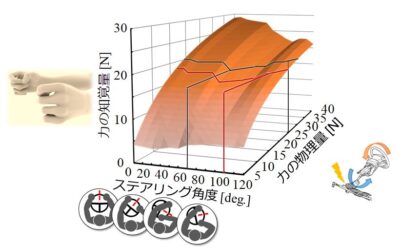Advances in computer technology are making it possible to reproduce the musculoskeletal system’s physiological, mechanistic, and mechanical properties using computers. By applying these body modeling techniques, we are researching methods to evaluate the characteristics of human movement and sensation with clear physical evidence and to link this to assistive technologies for smarter human support and more user-friendly product design.
Human body modeling for machines and products that support people wisely
-
- Jumpei Sato, Kazuhiro Takemura, Naoki Yamada, Atsuhide Kishi, Kazuo Nishikawa, Takahide Nouzawa, Toshio Tsuji, and Yuichi Kurita, Investigation of subjective force perception based on estimation of muscle activities during steering operation, 2013 IEEE/SICE International Symposium on System Integration (SII2013), pp. 76-81, Kobe, Japan, Dec.14 – 17, 2013.
Interface Design Method Based on Muscle Burden Estimation
Quantitative evaluation of human-perceived ease of holding and use
- Atsutoshi Ikeda, Yuichi Kurita, and Tsukasa Ogasawara, ” Product Usability Estimation using Musculoskeletal Model,” IEEE RAS / EMBS International Conference on Biomedical Robotics and Biomechatronics (IEEE/EMBS BIOROB 2010), pp.307–312, Tokyo, Japan, 2010.9



